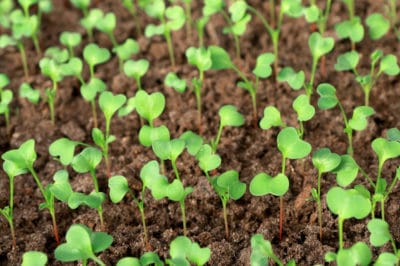Radish Basics
All radishes benefit from friable, moisture-retentive soil. They like plenty of phosphorus but not too much nitrogen, which promotes leaf rather than root development. Steady moisture keeps them from getting too hot. Timely harvest prevents them getting woody or spongy. Proper thinning means they won’t have to compete for space, moisture or nutrients.
Why Thin Radishes?
As a root crop, radishes need adequate space to develop. If not thinned, they are more likely to become misshapen. Even more important, crowded radishes may not have enough moisture, which can result in overly hot radishes. Inadequate moisture can even halt root development. Crowded radishes are also more likely to be going short on nutrients because of competition.
Radish Spacing
Each type of radish variety needs different spacing:
- Spring radishes need one inch between mature plants.
- Winter radishes need four inches between mature plants.
- Edible podded radishes need 18 inches between plants
How Variety Affects Thinning
Time to maturity affects thinning practices. The short season radishes grow so quickly they can’t afford crowding. Here are several that must be thinned early:
- De Jours – 18 days
- Early Scarlet Globe – 22 days
- Cherry Belle – 22 days
- Burpee White – 25 days
- Easter Egg – 25 days
- Plum Purple – 25 days
Thinning Spring Radishes
Spring radishes typically germinate within four or five days and have reached the sprout stage by the time they’re a week old. It’s best to thin them between seven and 10 days, before the roots can become tangles. That’s particularly true if you’ve broadcast seed or used older seed and planted them thickly. Cut the tiny sprouts to about one inch apart with a pair of fine-pointed scissors.
Thinning Winter Radishes
Winter radishes are meant to be sown in late summer and store in the garden through winter. These radishes grow larger than spring radishes and need more space. However, you can leave a little less space between each plant and harvest them as they grow larger so the mature plants are at the right spacing. If you follow this practice make sure they are well-watered and fed.
Thinning Edible Pod Radishes
Edible podded radishes are tall (three to four feet) and need considerably more space than their underground cousins. These radishes are more like “regular” garden vegetables than root crops. Water well before thinning and gently pull the plants you don’t want. They must also be staked, as the plants tend to flop over from the weight of their spicy, crunchy pods.
